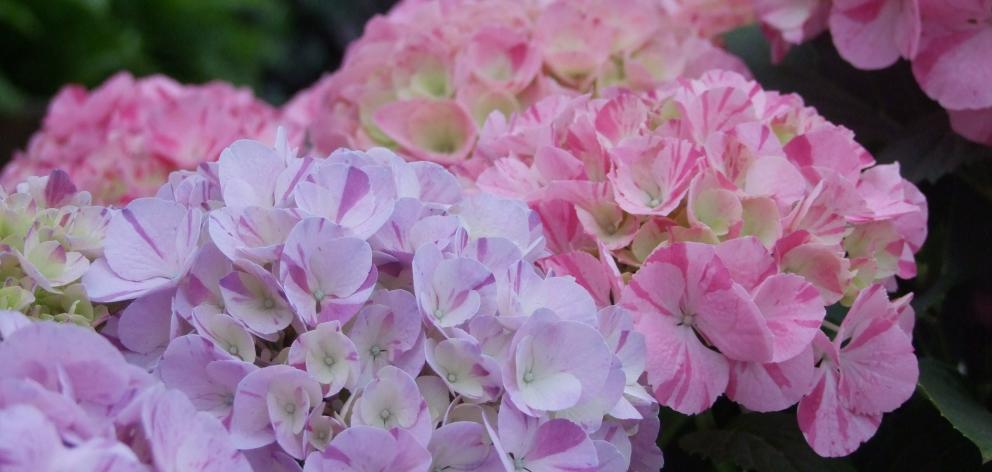
Once upon a time, in childhood and beyond, hydrangeas were the ugliest, horriblist, scabbiest flowers on earth, on a par only with stinging nettle and wild thistles.
Compared with the likes of the happy, sunny, cheery daffodil or the heady daphne flower, with its wondrous, exquisite scent and dainty head, hydrangeas were brown and frumpy and creepy, growing profusely in dark and dreary places. These nasty plants were reminiscent of trips to the dentist and visits to Great Aunt Nellie.
Not that Nellie herself wasn’t the nicest, kindest old lady out. Even if she did peer at you over top of her wire-rimmed spectacles and lick her lips as if she was about to eat you.
Nellie lived in a house with stairs, next door to a dairy. For country kids, there were few more exciting places to live — a real staircase plus little bags of mixed lollies just moments away and not just after church on Sundays.
The downside in visiting was that Nellie she had a backyard full of spider-infested, terrifying hydrangeas. She was not a gardener and those hydrangea plants hadn’t been pruned in decades.
The only other exciting thing in her "garden" was a wire clothesline and a wooden pole which my sister and I would occasionally attempt to pole vault, always without success. When afternoon tea was over and the adults wanted to talk, we would be banished to the backyard with the scary, miserable hydrangea bushes, for what, sometimes, seemed like hours at a time.
Fast-forward and I find I have become more and more beguiled by these glorious flowers to the point that now I am totally besotted by their beauty, their longevity, their many and varied colours and their unpredictability. Everything is magical about these glorious, heady specimens of flowerhood.
This wonderful plant (fabulously called le hortensia in France) is ideally suited to the non-gardener (although apparently not great aunts) . It grows easily from cuttings, is nearly impossible to kill, requires very little maintenance or care, lives almost forever and mostly prefers shade over sun.
If a rose is a rose is a rose, a hydrangea is so much more in all its many ages and stages of life.
The hydrangea is incredibly versatile as a cut flower, a dried flower, a shredded flower, a wedding flower, a mourning flower and an anything-in-between flower.
Once winter is more or less gone and the brown stalks have shed their leaves, the flower buds and the green glossy leaves of summer appear. I await eagerly for those budding broccoli florets to turn into broccoli heads.
After that there is the anticipation of what colour they will be. Pink, purple, scarlet or baby blue, like last year. Following summer and many months of enjoying this most gorgeous flower, the annual ageing process begins, the time when the colours often become the most absorbing — metallic green, antique red, bronzed silver, charcoal blue — a copious multitude of rich and varied hues.
If the rose is queen of the garden, then the hydrangea must, most certainly, be king.
- Jennifer Connolly is a Wanaka writer.










